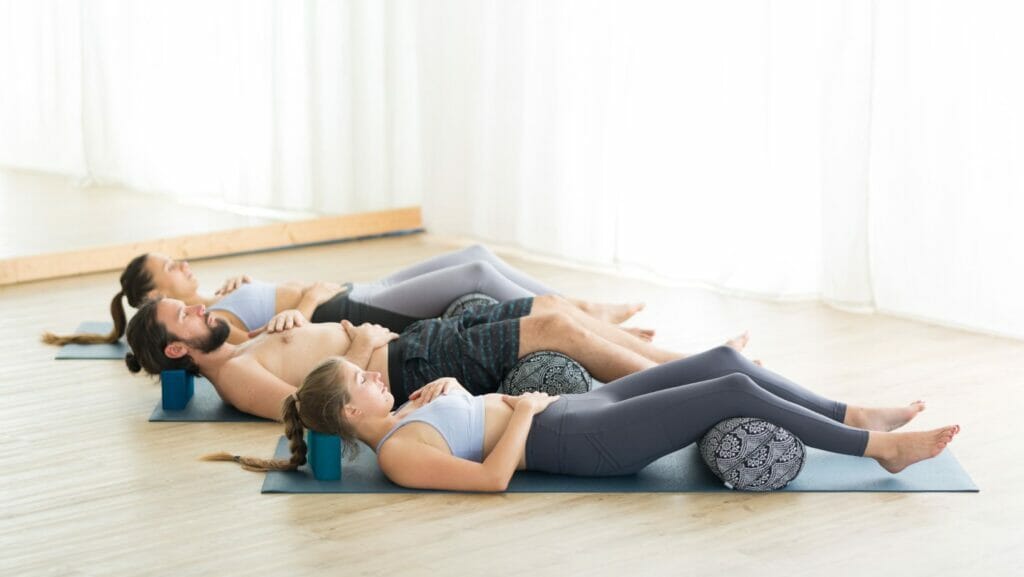
The world can be a stressful place and yoga is a natural way to help reduce stress and anxiety. Restorative yoga has many benefits and is a style of yoga that is effective for stress and anxiety relief. It is a way to actively relax and restore the body and is a wonderful addition for any self-care routine. There are many benefits of this type of yoga practice that improve quality of life.
First, restorative yoga provides an environment for complete relaxation by the use of props to hold students in a pose for 10 to 20 minutes without any discomfort or strain. Standard and creative props can both work beautifully. If you are practicing from home, household items make great alternatives for standard yoga props. This allows the body to release any residual stress, anxiety or strain that the tissues are holding. Muscles and nerves are rested. Hormone levels are brought back to a normal range, and can even support weight loss. Restorative yoga aims to balance the SNS and PNS by providing our physical bodies with the space they need to rest and let go. In other words, Restorative yoga communicates with the SNS, letting it know that when there is no imminent danger, we can take time to rest and digest. It is recommended to practice without music, so that connection to the breath is maximized for total relaxation. Silence helps students to drop into the practice without distraction. This also facilitates healing, because the brain isn’t tasked with processing excess information.
Second, restorative yoga sequences are designed to move the spine in all directions to support an optimal range of mobility for a long time. The sequence would include twists, forward folds, and backbends. The poses would be held for about 15 to 20 minutes to get the full benefits. Restorative classes usually last one to one and a half hours to be able to include all the spinal movements. The fascia throughout the muscles would be hydrated and allowed to stay supple and untangled. It is a great practice to include after a workout or if you were standing a great deal to support the muscles in recovery.
Third, a well-sequenced restorative practice will include an inversion that reverses the effects of gravity such as legs up the wall. If you only have time for one restorative yoga pose a day, legs up the wall is the perfect choice. This relieves fluid accumulation in the lower extremities and enhances function of the cardiovascular system. This type of yoga allows time for the systems of the body to integrate and communicate effectively with each other.
Fourth, restorative yoga alternately stimulates and soothes abdominal organs through compression and releasing in forward folds and twists. This compression temporarily blocks the blood flow to a targeted area and upon release of the pose, the fresh blood rushes to the area. It balances the energy in the body so that the practitioner is neither overstimulated or depleted.
Finally, in addition to these healing benefits, Restorative yoga helps with injury prevention. It’s designed to help students to be more adaptable and responsive, so energy can flow more freely throughout their bodies. This is a big part of what promotes healing and injury prevention. Restorative yoga practice complements exercise routines. It can also be useful for aging populations looking to counteract a lack of mobility and inactivity.
With all of these benefits, an addition of restorative yoga is sure to benefit all! Even if you don’t have time for a full practice daily, doing only one pose a day can greatly improve the quality of your life. Check out the My Vinyasa Practice on-demand and live-stream classes for Restorative Yoga!
